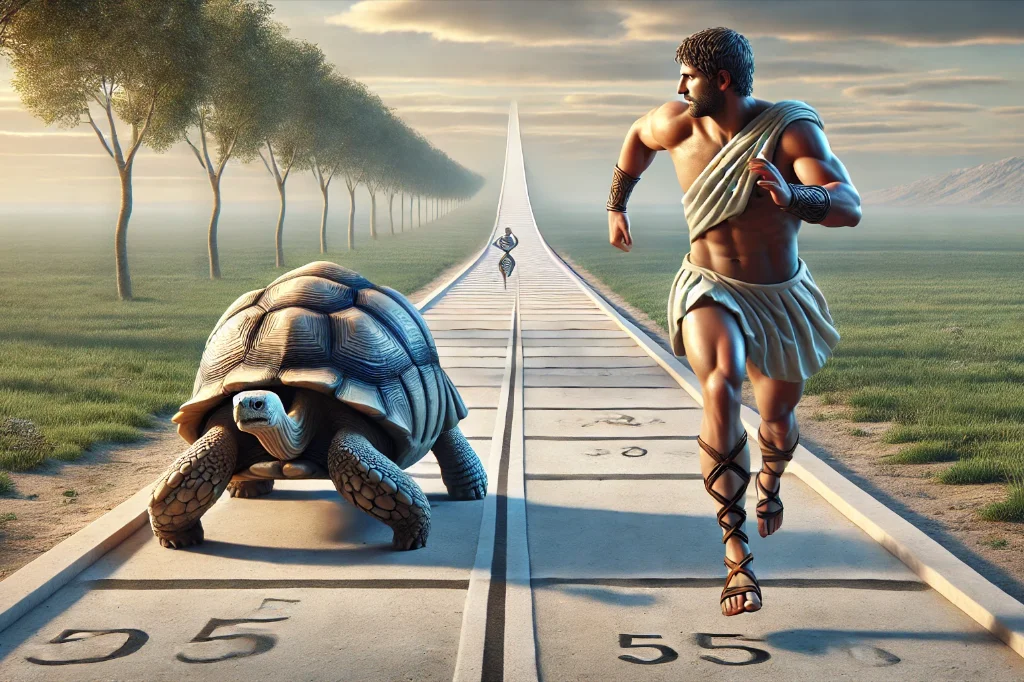Paradoxes

The paradox of Achilles and the Tortoise is one of the most famous paradoxes proposed by Zeno of Elea to challenge our understanding of motion and infinity. Zeno, an ancient Greek philosopher, used this paradox to demonstrate that motion, particularly when viewed through the lens of infinite divisions, could be logically impossible. The paradox highlights how an infinitely small gap can appear to prevent even the fastest runner from overtaking a slow-moving opponent.
The Essence of the Paradox
In this paradox, Achilles, the legendary Greek hero and swift runner, is racing a slow-moving tortoise. Since Achilles is much faster than the tortoise, the tortoise is given a head start. Zeno argues, however, that Achilles can never catch up to the tortoise, despite his superior speed. Why?
Zeno’s logic is based on the concept of an infinite series of points. First, for Achilles to overtake the tortoise, he must reach the spot where the tortoise started. But by the time Achilles reaches that spot, the tortoise has moved a little further ahead. Then, when Achilles reaches the new position of the tortoise, the tortoise has again moved slightly forward. This process repeats infinitely, leading to the conclusion that Achilles can never catch the tortoise, as there will always be a small distance remaining between them.
The Mathematical Explanation
While Zeno’s paradox may seem intuitively compelling, modern mathematics provides a resolution. The problem lies in summing an infinite series of steps. Although the distance between Achilles and the tortoise can be divided into infinitely many segments, the sum of these distances is finite. In mathematical terms, this situation is resolved using the theory of limits, where an infinite series can converge to a finite result.
For example, if Achilles runs twice as fast as the tortoise and the tortoise is given a 10-meter head start, then Achilles takes half the time to reach the spot where the tortoise was. He then takes half of the remaining time to get closer, and so on. Although this process goes on indefinitely, the total time and distance Achilles needs to catch the tortoise are finite, and he will indeed catch up at a specific point in time.
Philosophical Significance
Zeno’s paradox is not just a mathematical puzzle; it’s a philosophical challenge to our understanding of time, space, and motion. It emphasizes how our perception of the world, based on continuous and seamless movement, can be called into question when we begin to analyze motion in terms of infinite subdivisions. The paradox raises questions about whether time and space are continuous or infinitely divisible, and how motion can occur under such conditions.
While modern mathematical analysis has answered this paradox through the concept of limits and demonstrated how the summation of infinite actions allows motion to occur, the paradox remains a profound philosophical inquiry. It forces us to reconsider the fundamental nature of reality and challenges the way we understand continuity, time, and motion, suggesting that our intuitive grasp of the world may not always align with its logical structure.